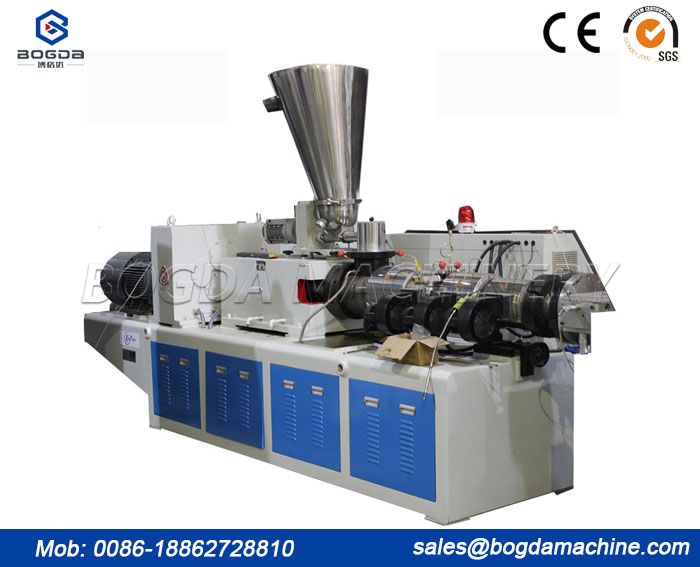
In most Twin Screw Extrusion Line, the change in screw speed is achieved by adjusting the speed of the motor. The drive motor typically rotates at full speed of approximately 1750 rpm, which is too fast for an extruder screw. If it is rotated at such a fast speed, too much frictional heat will be generated, and a uniform, well-stirred melt cannot be prepared because the residence time of the plastic is too short. A typical reduction ratio should be between 10:1 and 20:1. The first stage can be either gear or pulley block, but in the second stage it is best to use the gear and position the screw in the center of the last large gear. For some slow-running machines (such as twin-screws for UPVC), there may be three deceleration stages, and the maximum speed may be as low as 30 rpm or lower (ratio of 60:1). On the other hand, some very long twin-screws for agitation can run at 600 rpm or faster, thus requiring a very low deceleration rate and more deep cooling.
If the deceleration rate is mismatched with the work, too much energy will be wasted. It may be necessary to add a pulley block between the motor and the first deceleration phase that changes the maximum speed, either to increase the Automatic Twin-Screw Compounding Extruder speed even beyond the previous limit or to decrease the maximum speed. This increases the available energy, reduces the current value, and avoids motor failure. In both cases, the output may increase due to materials and their cooling needs.

Copyright © Bogda Machinery Group All Rights Reserved | Sitemap
